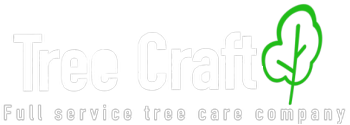Fruit trees are not just an aesthetic addition to your property; they also provide a source of delicious, homegrown produce. However, to ensure a bountiful harvest and the continued health of your fruit trees, proper tree trimming is essential. Today, we at Tree Craft Tree Service would like to explore the significance of tree trimming for fruit trees and share valuable tips to help you achieve the best results.
What is the Purpose of Trimming a Fruit Tree
1) Enhanced Sunlight Exposure: Fruit trees thrive on sunlight. Trimming helps to open up the canopy, allowing more sunlight to reach the inner branches. This not only stimulates fruit production but also contributes to the overall health of the tree.
2) Improved Air Circulation: Proper air circulation is crucial to prevent the development of diseases and pests. Trimming away excess foliage promotes better airflow through the tree, reducing the risk of fungal infections and insect infestations.
3) Shape and Structure: Trimming helps maintain a well-balanced and structurally sound tree shape. This is particularly important for fruit trees, as it ensures that branches are adequately supported, reducing the risk of breakage under the weight of fruit.
Best Time to Prune Fruit Trees
Timing is key when it comes to trimming fruit trees. The ideal time for pruning is during the dormant season, typically late winter or early spring before the tree enters its active growth phase. This minimizes stress on the tree and allows it to allocate resources efficiently.
Best Practice Tree Trimming Techniques
1) Remove Dead or Diseased Wood: Begin by cutting away any dead or diseased branches. This not only improves the tree’s appearance but also prevents the spread of diseases.
2) Thinning Out the Canopy: Thinning involves selectively removing branches to allow more sunlight to penetrate. This encourages the growth of new fruiting wood and promotes better fruit quality.
3) Heading Back: Heading back is the process of shortening the length of branches. This encourages the development of lateral shoots, creating a fuller and more robust canopy.
4) Pruning for Shape: Consider the natural shape of the specific fruit tree variety you have. Different trees have different growth habits, and pruning for shape ensures optimal sunlight exposure for all parts of the tree.
5) Pest Control: Regular trimming allows for the early detection and removal of branches infested with pests. This proactive approach helps prevent pest-related damage to fruit and leaves.
Tree Trimming, Pruning, Emergency Removal & More in West Norriton Township, Tredyffrin Township, East Norriton, Radnor, Wayne, Saint Davids, Lower Merion Township, Norristown, Upper Merion Township, Phoenixville & Greater King of Prussia, Pennsylvania
Tree trimming for fruit trees is a critical aspect of orchard management. It’s a proactive measure that contributes to the overall well-being of the tree and ensures a more abundant and high-quality harvest. Whether you have apple, peach, pear, or citrus trees, the principles of proper tree trimming remain consistent. By investing time and effort into the art of trimming, you not only enhance the aesthetic appeal of your orchard but also reap the sweet rewards come harvest season. Call Tree Craft Tree Service and let us assist you with efficient tree trimming and removal.




